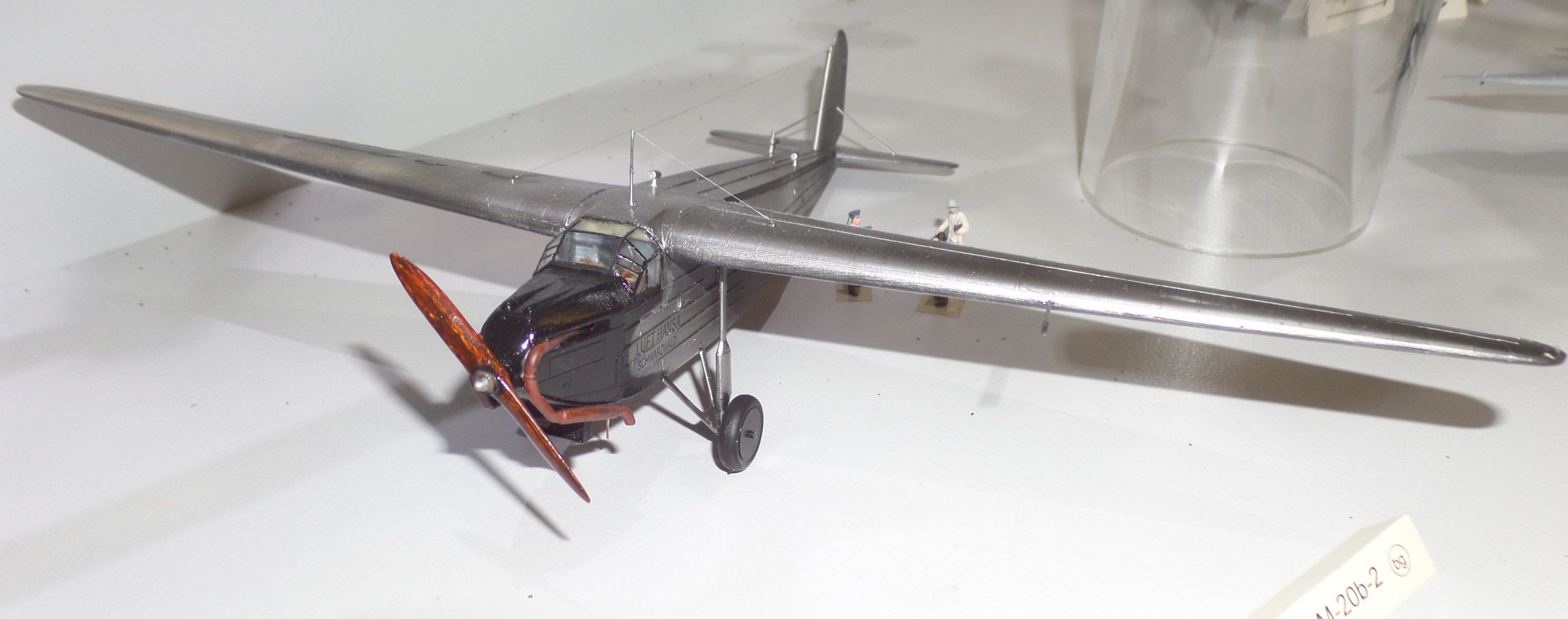Model of the months March 2019 Messerschmitt M 20
BFW (Messerschmitt) M 20
(Modell im Maßstab 1:72)
The models are painted according to the LUFT HANSA design of 1928
Here we come across a very interesting and far-reaching story: Willy Messerschmitt designed the M 20, the first metal Messerschmitt aircraft from Augsburg. (The M 18, also made of metal, was developed in Bamberg before moving to BFW in Augsburg). All his life Messerschmitt was an advocate for extreme lightweight constructions.
We anticipate something: After several crashes, Erhard Milch, the boss of the former LUFT HANSA, accused him of being more than dubious in his behaviour and his constructions being questioable. This resulted in a feud that lasted well into the war, when the Me 210 flopped and other problems burdened their relationship. In the meantime Milch had become the supreme client of the German aviation industry as chief of the Reichsluftfahrtministerium (Aviation Ministry) - on the other hand Messerschmitt could get along better with the "Führer".
The M 20 was a typical Messerschmitt construction - like the powered gliders and sports aircraft, which were still made of wood: shoulder wing airplanes with trapezoidal wings and box-shaped fuselage. From today's point of view it was a Dornier Merkur with Messerschmitt wings.
The prototype crashed after the tail unit broke at the beginning of 1928 and the pilot was killed. Four planes were sold to the DLH (one to the DVL). In 1930 the next accident with casualties happened in Dresden while landing in bad weather. In April 1931 there was a broken tail unit again. DLH cancelled all orders and did not pay, it was a coffin nail for the BFW.
But here it gets a bit mystical: despite non-payment the DLH used the M 20 again, chartered by DVL (Deutsche Versuchsanstalt für Luftfahrt), which took over the remaining aircraft. Who paid what, when, why and to whom and why the BFW went bankrupt nevertheless, these questions were never answered by the historians.
After that, no other incidents happened during flight operations. One plane went to Colombia and flew there without accidents for a long time. Some of these Lufthansa planes were still in service with the Luftwaffe until 1943 and were then scrapped. In total the DFLH had 14 aircraft (!).We don’t know if the one which went to Columbia is included in this number.
Technical data:
wingspan 25.50 m, length 14.90 m, wing area 65 m², height 3.75 m, empty weight 2600 kg, max. take-off weight 4650 kg, engine 1 x BMW liquid cooled standing in-line engine with 500 HP = approx. 370 kW. v/max 219 km/h, v/cruise 190 km/h, sevice ceiling 5500 m, range 880 km, crew 2 + 10 pax.



